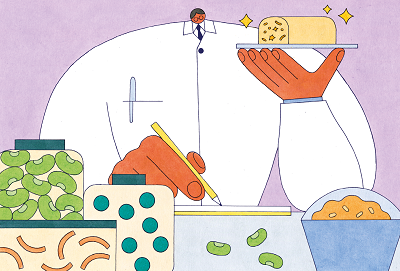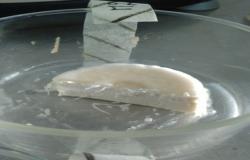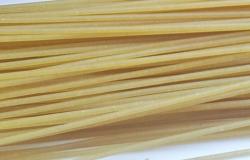Ressources dossier
Food, Global HealthLegumes, stars of the labs
Published on 18 January 2023

Mitigating climate change, reducing the need for synthetic fertilisers, maintaining water and soil quality... In addition to contributing to healthy food systems, legumes seem to be able to meet society’s new requirements, particularly in the face of environmental challenges. In the context of research on human nutrition, scientists are particularly interested in pulses, including soya, peas and lentils… After being shunned for a long time because they suffered from a poor image –difficult to digest, long to cook,...– these legumes are now back in the limelight. They are a source of protein, vitamins, fibre and minerals, have a low glycaemic index, limit the risk of cardiovascular disease and promote a feeling of satiety. Eaten with cereals, they provide all the amino acids we need and are a source of protein that can reduce our consumption of meat and our dependence on imported soya...
However, there is a downside: since the 1990s, French legume production and acreage have collapsed. The lack of outlets coupled with the problems of production and processing of legumes means that the sector is finding it difficult to structure itself. In the absence of public aid, these crops have been considered economically unattractive until now.
At the end of 2020 and in an effort to help the sector, the government set up a new €100 million “plant protein plan”, whose objectives include increasing the area under legume production by 40% in three years and supporting research and development in this sector. INRAE scientists are actively involved in this field and are working to facilitate the return of legumes to the consumer’s plate, in particular by including them in recipes for products commonly consumed by the population.
For dairy products
Mixing milk and plant proteins provides a way of initiating the dietary transition.
INRAE is developing new manufacturing processes for foods such as dairy products. Stéphan Marette, an INRAE economist in the Paris-Saclay Applied Economics unit, is working on ways to combine and balance the plant and animal based parts of our diet: “Even if we can note an increase in vegetarian or vegan diets, for the time being, 95% of consumers prefer animal derived products... Mixing cow’s milk and plant proteins provides a way of initiating the dietary transition while limiting changes in eating habits, and preserving the hedonic aspect linked to the consumption of milk”, he explains. This is how a “vegetarian milk product” saw the light of day on the researchers’ bench and is the subject of several patents with different compositions of up to 50% milk and 50% pea flour, the maximum level to still contain enough lactic ferments and to ensure that the taste is not too modified for the consumer. “In our studies, the most popular products are for now those containing 25% peas and 75% milk.” Stéphan Marette emphasises that the industry has yet to be created, along with increased production in the field.

In the context of a Qualiment® revitalisation project, a process for the fermentation of pea proteins has demonstrated its relevance to enhancing the sensory qualities linked to the use of plant proteins. Thanks to carefully selected microbial cocktails, it has been possible to formulate plant-based foods such as “yoghurts” and “cheese”.
For the softness of cakes

For its part, the SayFood joint research unit is working on obtaining a soft cake made from legume and cereal flours as this combination leads to a protein profile that is more balanced in terms of essential amino acids compared to cakes made exclusively with wheat flour. The FlexiProcess project has led to the development of a soft cake containing pea flour.
Camille Michon, former head of the unit (now director of Human Resources at INRAE), explains that this product was chosen because “it is a product of mass consumption, which can impact the whole sector if the integration of the legume in the recipe is accepted by consumers”. How do you find the right mix of wheat and pea flours to ensure the softness of the cakes and the honeycomb structure of the crumb? A multi-criteria and multi-constraint model was designed, taking into account, among other things, the proportion of pea flour in the cake, the particle size of the wheat and pea flours, the speed and duration of the mixing of the fat phase as well as the baking temperature. The idea behind it? Demonstrate that it is possible to equip oneself with tools to help steer the process and better control the quality of the finished products by correcting the effects of a raw material that is not fully standardised.
For the diet of the elderly
Here again, legumes are a solution to prevent potential problems of undernutrition in the elderly. In order to diversify the food offer adapted to the over-65s, it is necessary to understand the impact of changes in oral status. One of the objectives of the AlimaSSenS project is to understand the mechanisms of food breakdown and food bolus formation in the elderly. Most of the time, their oral physiology is altered and their protein needs are increased.
To meet these needs, INRAE researchers took examples of cereal-based foods with a honeycomb structure: brioche and sponge cake, and enriched them with legume proteins. Following studies using imaging and rheology (the study of the deformation and flow of matter under the effect of a stress), it was found that the latter only have a slight impact on breakdown and the enjoyment of eating. These results will enable the design of cereal foods enriched with proteins from legumes.
For a new pasta recipe
Owing to its taste, ease of preparation and reasonable price, pasta is one of the foods that is widely appreciated by all categories of consumers. Traditionally made from durum wheat semolina in France, pasta has a specific structure consisting of a protein network surrounding starch granules, which is responsible for its low glycaemic index and organoleptic qualities. However, it is low in certain amino acids essential to our health, such as lysine, and its consumption can lead to metabolic disorders in people who are intolerant to gluten... In order to supplement the gluten-free offer, INRAE is developing pasta made from a mixture of wheat semolina and legumes, thus providing essential amino acids, and which will soon be available on the shelves of supermarkets and specialist shops. The culinary, sensory and nutritional qualities are comparable to those of pasta made from 100% wheat or gluten-free cereal-based pasta. And what is more, the process retains the classic pasta-making steps, requiring no additional equipment!

A manufacturing process has been patented that can obtain pasta made of a mixture of durum wheat and legume flours. This pasta has a high nutritional value because of the levels and complementarity of the amino acids it contains. It is also easy to digest and has a low fat content, which means it is particularly well-suited to the needs of older people.
A genuine breeding ground for innovation, legumes meet nutritional and environmental needs: research is thus actively pursuing the creation of a new food offer and the promotion of these plant proteins. But supply is not enough: public action will have to support it and help structure the sector to facilitate its adoption by consumers.
-
Élodie Regnier
(Send email)
Author / translated by Alessandra Riva
Communications Department
